The Power of Quarterly Business Development Plans in Hospice Growth
In the increasingly competitive environment for hospice community engagement and business development, it’s easy to slip into one of two extremes:
- Running from referral source to referral source with no real strategy, or
- Setting lofty goals and then feeling frustrated when they aren’t met.
At Transcend, we believe the true value of a quarterly business development plan lies in the middle of the two. It’s not just about setting benchmarks – it’s about creating a systematic, repeatable process to see what’s working, what needs refinement, and what next steps to take.
Why a Quarterly Plan Matters
If your community liaison team is simply “making the rounds,” dropping off pens and flyers (or worse yet … muffins), without structured goals about how to develop deeper referral relationships and increase market share, you have no way of tracking success.
A well-structured quarterly plan forces focus. It gives business development teams a roadmap for where to spend their time, which tactics to prioritize, and how to connect activities to actual outcomes – like referrals of eligible patients at the right point in their serious illness journey.
Quarterly planning creates strategic clarity, so everyone knows where they’re focusing and why. It ensures consistent measurement so that data – not anecdotes – drives decision-making. And it builds agility, allowing organizations to make targeted adjustments every 45 to 90 days instead of waiting for year-end reviews.
Key Elements of a Strong Hospice Business Development Plan
Every effective quarterly plan begins with a performance review of the previous quarter’s referral, admission and conversion trends. This retrospective view helps identify which referral sources are making timely referrals, are satisfied with the care your organization is providing, and whether they are engaging hospice at the right time in the illness journey.
From there, the plan should define a priority account list, highlighting the small set of referral sources – usually 10 to 15 – that represent the greatest opportunity for impact. This includes high-producing accounts to nurture, potential growth accounts to develop, and inactive accounts to re-engage.
Next, the plan outlines tactics and activities for each priority account. These are specific actions, such as targeted education, relationship-building visits, in-services and collaborative events, that will directly support the growth objectives for that account.
It should also include clear benchmarks and goals that define success for the quarter. These go beyond simple referral counts to include measures like conversion rate, average length of stay, and targeted market share improvements.
The planning process should also involve the clinical and admissions teams before approval. After all, they’re the ones who will have to ensure they have the resources and capacity to provide care to new accounts. They shouldn’t get an absolute veto, but involving them in the planning stages builds buy-in and can avoid service failures down the line.
Finally, the plan should address resource planning, detailing how each liaison will allocate their time, what materials or support they will need, and how leadership will ensure they have the tools to execute effectively.
How to Measure Progress and Impact
A quarterly plan is only valuable if it’s actively tracked. Consider a structured review process at the quarter midpoint to measure progress in real time, tracking actual performance against goals. Monitor whether targeted accounts are producing more eligible patients, evaluate conversion rates to see if messaging is resonating, and review length of stay trends to determine if earlier eligible referrals are being secured.

What to Do if the Plan Misses the Mark
Even the best plans sometimes fall short. That’s not failure: it’s feedback. Start by diagnosing the gap – was it an execution issue, a tactic that didn’t connect, or an external factor beyond your control? Adjust in real time, replacing or refining underperforming tactics, and capture lessons learned so the next quarter’s plan builds on experience rather than repeating mistakes.
Getting Started
Quarterly business development planning isn’t about perfection – it’s about progress. By systematically reviewing your market, setting focused priorities, executing with discipline, and adjusting quickly, hospices can grow not only their census but also the quality and timeliness of the care they deliver.
Need help getting started? Drop us a line at [email protected]. We help hospices and home-based care agencies build the growth infrastructure to ensure sustainability, and we’d love to talk about what we can do for you.












